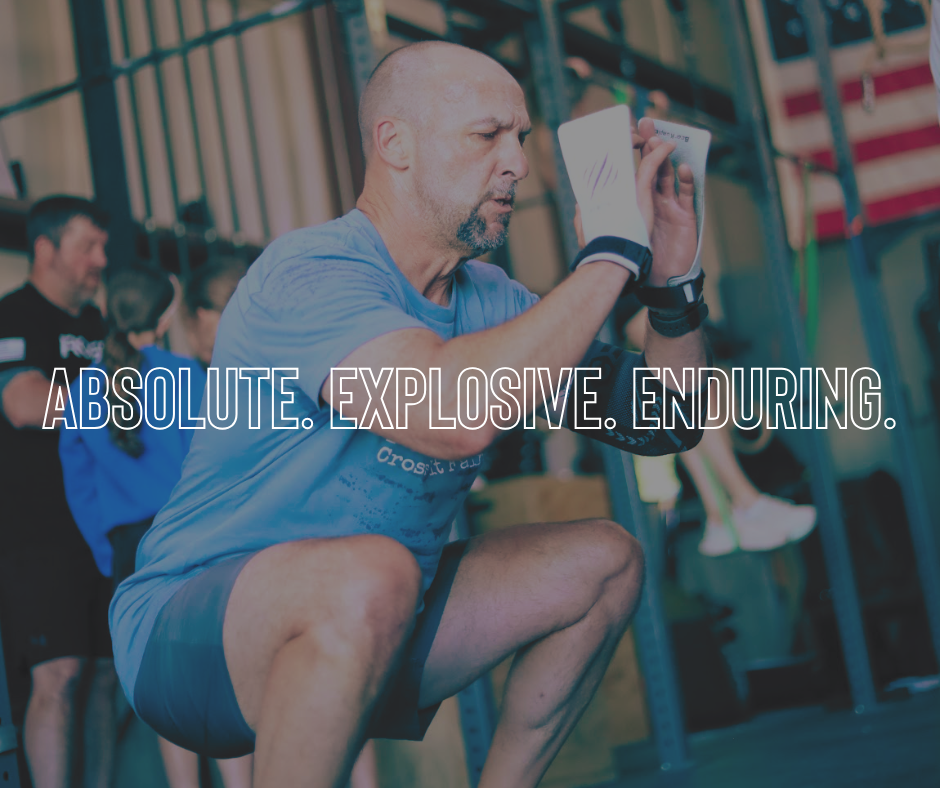The 3 Attributes of Strength (And Why They All Matter)
- Keith E. Knapp

- Jul 1
- 3 min read

“The difference between a successful person and others is not a lack of strength, not a lack of knowledge, but rather a lack in will.” — Vince Lombardi |
Hey team,
In our last programming deep-dive, we talked about the three pillars of complete fitness: Strength, Conditioning, and Mobility.
Today, we’re zooming in on one of the most fundamental, most misunderstood pieces: Strength. When we say “we’re building strength,” we’re not just talking about lifting heavy.
Strength is multi-dimensional. In fact, there are three distinct types of strength that show up in the gym—and in life. Understanding each one helps us to train smarter, track progress more clearly, and move with more purpose.
It’s not just about moving heavy weights—it’s about how and when you apply that strength.
Let’s break it down.
1. Absolute Strength
This is your raw power. Your one-rep max. Your top-end capacity. The heaviest thing you can move, once.
What it looks like: Heavy squats, deadlifts, strict presses.
Why it matters: Absolute strength is your foundation. If you increase your absolute strength, the more potential you have across the board. Everything from Olympic lifts to push-ups gets easier when your max capacity goes up. It’s not about PRs alone; it’s about potential.
2. Explosive Power
This is strength expressed quickly. Your ability to generate force fast.
What it looks like: Cleans, snatches, box jumps, sprints.
Why it matters: This is the bridge to athleticism. It’s what helps you accelerate under the bar, jump higher, sprint faster, and move like an athlete—not just a lifter. The better your power output, the more efficiently you can move—whether it’s cycling a barbell or chasing your kid up a hill.
3. Muscular Endurance
This is your ability to repeat efforts under fatigue. Strength over time. Capacity in motion.
What it looks like: Wall balls, push-ups, pull-ups, high-rep barbell work.
Why it matters: This is what keeps you moving through long workouts and tough intervals. When your legs are on fire halfway through a workout but you keep moving—that’s muscular endurance. It’s also what helps you perform in life when the task takes more than 60 seconds. It’s what carries you through long WODs, ruck hikes, or a day full of tasks.
So what?
Our intentional approach to training means each training cycle is carefully designed to develop all three attributes of strength in balance.
Some days, we’ll focus on building your absolute strength with heavy singles, doubles, or triples.
Other days, we’ll move with speed to develop power.
And often, we’ll test your ability to hold pace and technique under fatigue.
We like this framework because it reflects what we value most—developing well-rounded, capable, life long athletes who can rise to any challenge in the gym or outside of it.
These three attributes—absolute strength, explosive power, and muscular endurance—are important pillars of our programming because they build transferable, real-world capacity.
We’re not just checking boxes or following trends. We’re building programming that deliberately develops strength in all its forms—so our community can show up stronger in workouts, in sport, and in life.
What’s Next: Conditioning That Builds Capacity
Strength is only part of the picture. 1/3 of it to be more precise. In our next edition, we’ll dive into the second tenet of complete fitness: Conditioning.
We’ll explore the energy systems we train, how pacing days differ from performance days, and why improving your engine doesn’t just make workouts easier—it makes life easier. Stay tuned.
Until then, keep moving with intention.
One day, one workout, one lift at a time.




Comments